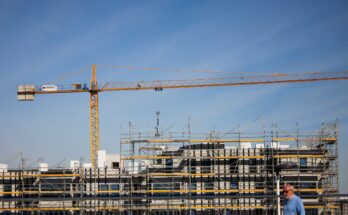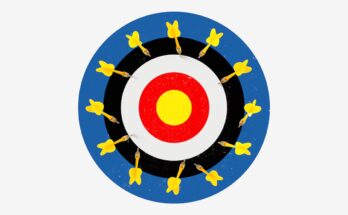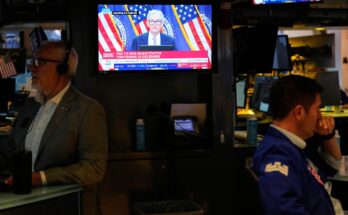The Hewlett-Packard (HP) factories in Sant Cugat del Vallès, near Barcelona, are so large that you have to drive to get from one building to another. In a corner of this labyrinth where half a century ago there were farms and fields, and where today the most advanced technologies of this company are developed, there is a replica of the garage of David Packard’s house. In this type of cabin, Packard and William Hewlett began to develop oscillators and electronic sound systems. It was 1939 in Palo Alto, California, and the myth of Silicon Valley began, and with it all the stories of entrepreneurs who started working in a garage. The Packard cab has become the symbol of the Californian valley and HP has become one of the largest technology companies in the world, with a turnover of 53.6 billion dollars in the fiscal year 2024 (just over 46 billion euros) and a profit of 2.8 billion dollars (2.407 million euros).
Macroeconomic uncertainty and high competition in the technology sector have made HP suffer: in recent years its numbers have been declining (0.3% less turnover in 2024 and 14.6% less in 2023) and so has its price on the New York Stock Exchange: it reached highs of almost 40 dollars per share in June 2022, after the general rise of the entire technology sector after the pandemic, but the price continued to decline at a pace, albeit with high and low, up to the current $28. In recent weeks it has strengthened thanks to the agreement with Nokia to strengthen processes with artificial intelligence (AI), one of the great resources that HP has to stay in the technological battle.
This company’s commitment to artificial intelligence is crystallized in the Sant Cugat factories. As HP celebrated the 40th anniversary of this center in early October, the company announced that it would reformulate facilities to locate its first global AI hub here. From now on, all the processes and innovations that HP creates through artificial intelligence will pass through Sant Cugat or come from there. HP has been focused on the development of artificial intelligence for a long time, but had not yet chosen a focus. And in the town of Barcelona, where 2,600 employees work (out of 58,000 in the world), there are already 200 working on AI development alone.
“The capacity for reinvention of this center has allowed it to become a success story. This center is very important for exporting talent,” says Daniel Martínez, director and president of the company’s large format printing division. In the HP factories in Sant Cugat it is possible to see all the sectors of activity in which the company is immersed and for which it is famous: from laptops to printers, including audio systems or computer accessories. In the municipality of Barcelona there is an important printing division, where there are large format solutions such as banners or canvases, but also very detailed 3D printing solutions or very specific technologies, such as the vinyl that decorates Coca-Cola cans with their names: that is printed by HP.
Inés Bermejo, general manager of HP Iberia, explains that the Sant Cugat center “has been very important for the company since the beginning”: so much so that HP’s global CEO, Enrique Lores, started there. “40 years ago the division in San Diego (USA) needed a production center in Europe and some decided to apply for Spain. We competed with many countries, but we won,” explains Helena Herrero, HP president for Europe, Middle East and Africa. It used to be in Terrassa, but five years later it outgrew it and moved to Sant Cugat: “This was full of farms, and this is where it became Silicon Valley,” jokes Herrero.
Specialization
The director of the center explains that, just as in the 1990s the factories were in danger due to the relocation processes that brought the production centers to Asia, now the challenge was not to be left behind. To avoid this, the center has specialized not only in the graphics sector but also in robotics and, now, artificial intelligence. Those responsible show very different developments: from a robot capable of orienting itself and drawing construction plans at the workplace (which until now was only done with human means) to the artificial intelligence chips that are already in 25% of all computers produced by HP.
“The interesting thing is to have the AI processes on the PC itself, not in the cloud,” explains Martínez. This allows, for example, in videoconference meetings that the computer is able to eliminate noises other than the speaker’s voice, or that the camera detects who is in the meeting room and who is just passing by in the corridor. Artificial intelligence is also accelerating 3D printing processes, especially in prototyping: “This is very necessary in the construction sector or in industrial development, and will significantly improve the production of medical prosthetics, for example,” says Martínez, with the hope that artificial intelligence will allow the company to remain a leader in the technology sector in the battle to cross the final frontier.



